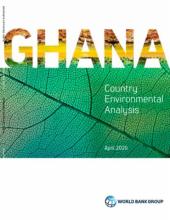/ library resources
Showing items 1 through 9 of 6408.Mapping the characteristics and extent of environmental conflicts related to land use is important for developing regionally specific policies.
The accelerated development of new urban areas has an impact on changes in the spatial use and complexity of ecosystems.
Monitoring of irrigated land cover is important for both resource managers and farmers. An operational approach is presented to use the satellite-derived surface temperature and vegetation cover in order to distinguish between irrigated and non-irrigated land.
A framework was developed to elucidate (1) the drivers of land degradation, (2) pressures, (3) local impacts and vulnerabilities and (4) adaptation strategies.
The complexity of spatial use has an impact on poverty and the development of slum settlements towards a decrease in environmental quality.
ABSTRACTED FROM EXECUTIVE SUMMARY:
This review does not attempt to be comprehensive. Instead, we highlight:
-
benchmarks in the evolution of land use policies in Sri Lanka;
Indigenous Peoples and local communities manage more than half of the world´s land. These biodiverse ancestral lands are vital to the people who steward them and the planet we all share. But governments only recognize indigenous and community legal ownership of 10 percent of the world´s lands.
COVID-19 has negatively affected indigenous land rights, particularly for those who already face food insecurity as a result of land confiscation or grabbing and the loss of their territories.
Over the past 30 years, real GDP in Ghana has more than quadrupled, and in 2011 the country joined the ranks of Lower Middle-Income Countries (LMICs).
Paginação
Land Library Search
Through our robust search engine, you can search for any item of the over 73,000 highly curated resources in the Land Library.
If you would like to find an overview of what is possible, feel free to peruse the Search Guide.





